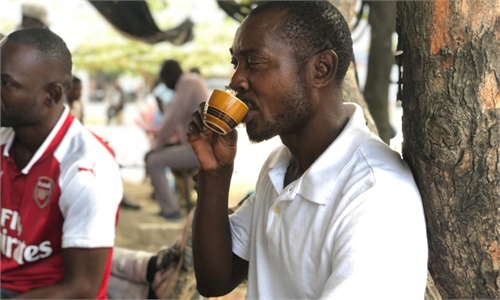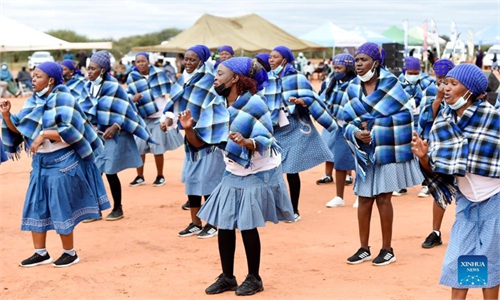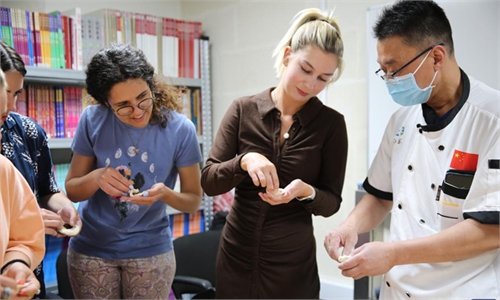ARTS / CULTURE & LEISURE
New Sanxingdui findings tell story of exchange, integration in Chinese culture
Ancient connections
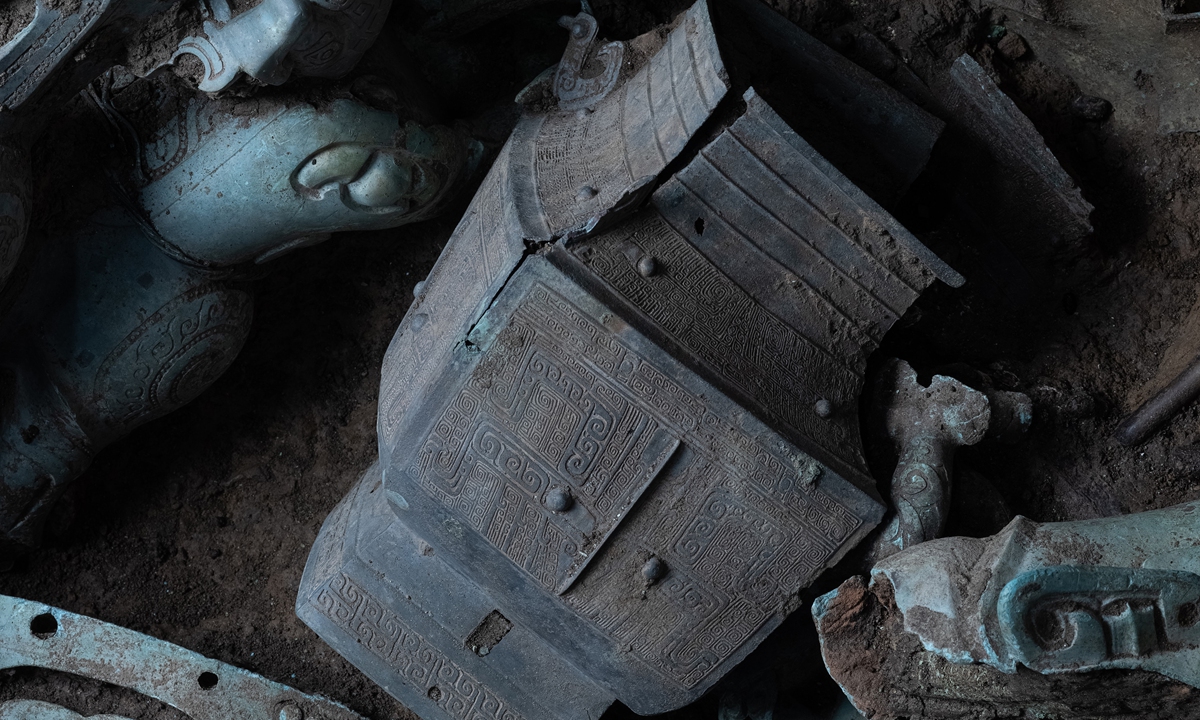
Fanglei, a ritual bronze wine vessel Photo: Courtesy of Sichuan Provincial Cultural Relics and Archaeology Research Institute
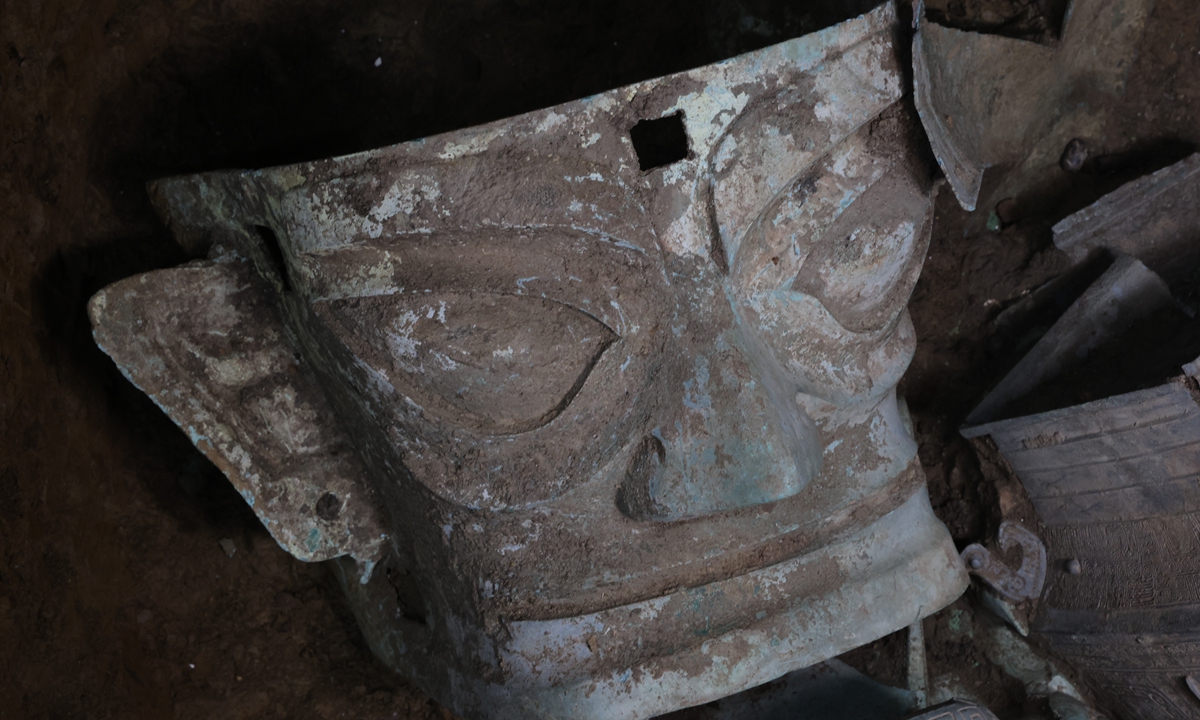
A bronze mask recently unearthed from the Sanxingdui Ruins Photo: Courtesy of Sichuan Provincial Cultural Relics and Archaeology Research Institute
Archaeologists have recently made some stunning discoveries at the famed Sanxingdui Ruins site in Southwest China's Sichuan Province.A treasure trove of exquisite bronze, gold and jade wares, including at least 10 unique bronze wares unearthed for the first time in the history of human civilization, have been excavated at the site.
A joint team of archaeologists from the Sichuan Provincial Cultural Relics and Archaeology Research Institute, Peking University, Sichuan University and other research institutions and universities have carried out the excavation of six sacrificial pits at this site since 2020.
The new finds are mainly excavated from the No.7 and No.8 sacrificial pits, bringing the total number of items discovered in the six pits at Sanxingdui to nearly 13,000, according to the Sichuan Provincial Cultural Relics and Archaeology Research Institute.
Earlier in 1986, archaeologists discovered thousands of precious cultural relics at the site, including a gold scepter and a bronze sacred tree, which aroused worldwide interest.
So far, more than 50,000 bronze and gold wares, jade and ivory carvings and ceramic artifacts have been unearthed at the site.
More discoveries
A bronze container with a green jade carving inside, discovered in the No.7 pit, is a highlight among the newly found artifacts. The top and bottom of the vessel are covered with tortoise-shaped reticulate lids, and the sides of the container are adorned with a bronze hinge, handles shaped as dragon heads and a few bronze streamers. According to archaeologists, microtrace analysis has revealed that the container was wrapped in silk.
"It would not be an exaggeration to say that the vessel is one of a kind, given its distinctive shape, fine craftsmanship and ingenious design. Although we do not know what this vessel was used for, we can assume that ancient people treasured it," said Li Haichao, a professor at Sichuan University who is in charge of the excavation at No.7 pit.
Jade wares and bronze decorations, figurines and bells were also found in the pit.
In the adjacent No.8 pit, archaeologists unearthed a variety of artifacts including bronze heads with gold masks, a bronze altar, a giant mythical creature made of bronze and a dragon-shaped bronze ware with a pig nose.
Another sophisticated sculpture in the No. 8 pit also excited archaeologists. It is divided into three parts. The middle part is a figure with a snake body and a human head with protruding eyes, tusks and horns. The upper part of the head is a trumpet-shaped zun (an ancient wine vessel), while the lower part is linked by the figure's hands and a square pedestal shaped like a lei (an ancient wine vessel).
Around the pits, archaeologists also found ash ditches, architectural foundations and small sacrificial pits containing cultural relics, as well as bamboo, reeds, soybeans and cattle and boars that may have been sacrificed.
Cultural diversity
"The sculptures are very complex and imaginative, reflecting the mythological world imagined by people at that time, and they demonstrate the diversity and richness of Chinese civilization," said Zhao Hao, an associate professor at Peking University who is head of the excavation of the No.8 pit.
Ran Honglin, an official with the institute, said that the sculpture of the human head and snake body shows characteristics of the ancient Shu civilization, the vessel with a square pedestal is the representative of the culture of the pre-Western Zhou Dynasty (1046BC-771BC), while the zun represents culture stemming from the Central Plains area.
"These three factors are now blended into one artifact, which demonstrates that Sanxingdui is an important part of Chinese civilization," Ran said.
"More cultural relics unearthed at Sanxingdui have also been seen in other locales in China, giving evidence of the early exchange and integration of Chinese civilization," Ran added.
Lei Yu, an expert from the institute, also confirmed the close cultural relationships between the newly discovered artifacts at Sanxingdui and other places in China, and their exchanges and integration.
For the next step, archaeologists will continue to explore the site outside the sacrificial area, and outline the ancient kingdom at Sanxingdui.
A new exhibition hall at the Sanxingdui Museum, covering an area of 44,000 square meters, is scheduled to be completed and opened to the public in 2023.
Originally discovered in the late 1920s, the Sanxingdui Ruins have been dubbed one of the world's greatest archaeological findings of the 20th century.
Located in the city of Guanghan, around 60 kilometers from the provincial capital Chengdu, the ruins covering an area of 12 square kilometers are believed to be the remnants of the Shu Kingdom, dating back some 4,500 to 3,000 years.
